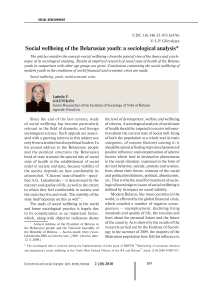Technologies substituting hospitalization (outpatient surgery) in regional health: economic-organizing aspect
Автор: Duganov Mikhail Davidovich, Shabunova Aleksandra Anatolevna, Kalashnikov Konstantin Nikolaevich
Журнал: Economic and Social Changes: Facts, Trends, Forecast @volnc-esc-en
Рубрика: Social development
Статья в выпуске: 2 (10) т.3, 2010 года.
Бесплатный доступ
The article deals with technologies substituting hospitalization in the context of the overall structure of health care, discusses the prospects and problems of their introduction into medical practice of public health institutions of the Vologda region from the standpoint of economic efficiency.
Technologies substituting hospitalization, interface, public health, territorial state guarantees program, a method of costs minimizing, economic impact, region
Короткий адрес: https://sciup.org/147223181
IDR: 147223181 | УДК: 614.2(470.12)
Текст научной статьи Technologies substituting hospitalization (outpatient surgery) in regional health: economic-organizing aspect
Since the end of the last century, study of social wellbeing has become particularly relevant in the field of domestic and foreign sociological science. Such appeals are associated with a growing interest in this subject not only from scientists but also political leaders. In his annual address to the Belarusian people and the political structures the Belarusian head of state stressed the special role of social state of health in the establishment of social order in society and state, because viability of the society depends on how comfortable its citizens feel. “Citizens’ state of health – specified A.G. Lukashenko – is determined by the manner and quality of life, as well as the extent to which they feel comfortable in society and the state they live and work. The stability of the state itself depends on this as well”1.
The study of social wellbeing in the world and home sociological practice is largely due to its consideration as an important factor, which, along with objective indicators shows the level of development, welfare and wellbeing of citizens. A sociological analysis of social state of health should be targeted to receive information about the current state of social well-being of both the population as a whole and its main categories, of reasons (factors) causing it; it should be aimed at finding ways (mechanisms) of positive influence and compensation of adverse factors which lead to destructive phenomena in the social situation, expressed in the form of deviant behavior, suicide, protests and tension, fears about their future, mistrust of the social and political institutions, political, absenteeism, etc. That is why the need for treatment of sociological knowledge to issues of social wellbeing is defined by its impact on social stability.
Modern Belarus, like most countries in the world, is affected by the global financial crisis, which entailed a number of negative consequences – unemployment, declining living standards and quality of life, the tensions and fears about the personal future and the future of the country. As is shown by the results of the research carried out by the Institute of Sociology in the summer of 2009, the majority of the Belarusian population have felt this influence in various forms: delayed wages and welfare benefits (16.2%), dismissals and reduction from enterprises (33.3%), rising prices for consumer goods and services (76.4%), depreciation of ruble savings (30.6%), including, deteriorated (injured) social well-being of the population, instantly reacting to the ongoing processes in the country, and to change of its position in modern society. 55% of respondents among the surveyed population expect the negative impact of the crisis on the country’s welfare, 60.2% – on the welfare of their own family. “Contribution of the crisis” was also different for different social groups and categories of the Belarusian population.
Youth appeared to be the most vulnerable, as primarily affected by the crisis (24.1%); then the impact of the crisis was felt by the middle generation (18.2%); the older generation sensed the crisis less than the rest (8.6%). The knowledge of the social well-being of young people, considered as a positive force in society, its main potential can build a sound long-term forecasts of changes in social well-being. On the one hand, young people is one of the most vulnerable groups, on the other it is the leading group, as it is open to the new, capable of non-traditional, innovative solutions in its nature.
An analysis of the sociology of theoretical development, accumulated on the problem of social condition and its related categories, suggests that, despite the undeniable advances in this field, there are still a lot of unresolved issues. To our mind, definition of the studied concepts are rather abstract, the structure of the social wellbeing, its factors and indicators are not adequately studied. And in general, such studies are fragmented.
Studying the process of conceptualizing the notion of “social wellbeing” in domestic and foreign science, one should make in it two stages: the latent stage and the stage of explication. In the first, the studied category in the scientific circulation is still missing; issues affecting the scope of wellbeing, i.e. perception of reality and position in society are in line with its related concepts - social attitudes, lifestyles, social consciousness, prosperity and comfort – in various fields of knowledge (B.D. Parygin,
A.G. Zdravomyslov, V.A. Yadov, B.F. Porshnev, N.S. Mansurov, N.I. Lapin, T.A. Zaslavskaya).
Explication period contributed to realization of social wellbeing as a self-contained category; the conceptualization in the scientific literature; understanding of its nature, reflecting the degree of individual’s (groups’) satisfaction of their position in society; the development of methodological grounds for the study of social wellbeing; introduction to sociological practices: Yu.A. Levada ( social wellbeing of the RF population), Zh.T. Tosh-chenko, S.V. Kharchenko (social wellbeing in the context of public sentiment), I.S. Kon, A.A. Rusalinova (issues of social wellbeing of people in the modern world) I.A. Dzhidaryan, E.I. Golovakha (mass measurement of social wellbeing), E.V. Davydova (social wellbeing of youth), L.Ya. Rubina (social wellbeing of teachers), O.A. Hasbulatova (gender dimension of social wellbeing), L.E. Petrova, O.L. Barskaya, N.V. Panina (indices of social wellbeing), M.A. Gurevich (social health as a leading indicator of social adaptation), L.V. Fi-linskaya, L.A. Soglaeva (social wellbeing of the population of Belarus), D.G. Rothman (social wellbeing of students), G.N. Sokolova (job satisfaction), R.A. Smirnova (social wellbeing of the rural population), and others).
Despite the significant contribution of the above-mentioned authors in the theory and practice of social wellbeing, their fragmentary nature can still be noticed, i.e. lack of an integrated approach to the study of social wellbeing, based on the principle of interdependence of the three spheres of the phenomena – of cognitive, emotional and behavioral – based on which social wellbeing is formed as the integral characteristics of the individual, social group, community, society at large.
Interdisciplinary retrospective analysis allows us to define the concept of social wellbeing as an integral entity, comprehensive description of personality, social group, community, a composite estimate of emotional state that results based on the perception of environmental reality and position in society in terms of satisfaction, identity and activity.
The sociological approach in contrast to the general psychological and others emphasizes the dual nature (dualism) of the phenomenon of wellbeing, i.e. its ability for attributing (to be an attribute of) both the individual and various levels of community – family, study group, job team, sports team, military unit, the society as a whole. Methodological individualism overemphasizes the first side of the duality, and methodological realism – the second. We proceed from the integrity of this phenomenon and see its dualism on the logic of the ratio of the total and the individual (similar to the dual nature of labor), according to which the total appears in / through the individual, but the essential features of the individual enter the total, separating this phenomenon from those in line. This means that the community’s wellbeing (the collective according to E. Durkheim) is not anthropomorphism (ill society), but a real fact (according to E. Durkheim), reflecting the empirical complementarity (the complementarity, coherence), the most important and common features of an individual wellbeing.
In turn, the total (collective) wellbeing affects the individual through the mechanisms of imitation, infection, irradiation (prevalence), induction, etc. The total (collective) wellbeing can be called social. However, the social factor has a large proportion individual in the wellbeing – the objective conditions of life, the position of man in society (collective), relationships with people and institutions, expectations and possibilities of their implementation, although their weight varies depending on the emotional states arising from ascription, natural inclinations, etc. (health). It is the social aspects of individual wellbeing which are the substrate (content) of social wellbeing.
The structure of social wellbeing includes cognitive, emotional, behavioral and evaluative elements.
The cognitive element of social wellbeing is actual knowledge, the awareness of people on public life, the knowledge that the individual is guided in daily life, which affects the adoption of certain life decisions.
The presence of the emotional component of social wellbeing is based on the fact that it contains the emotions, feelings, sentiment, i.e. mental human states, which are generated in the social reality and are the highest product of emotional processes in social conditions.
The behavioral component is revealed through the individual’s activity, through a willingness to act in certain situations under certain conditions, it also includes self-actualization, and protest actions, as a result of negative feeling and life dissatisfaction. Selecting indicators that measure social wellbeing, is conditioned by its ternary structure.
Firstly, cognitive sphere of social wellbeing is studied by: 1) assessment of the economic situation in the country; 2) assessment of the problem field in the country (current problems); 3) self-assessment of economic status and financial situation of the family; 4) selfidentification with certain social strata.
Secondly, emotional spheres of social wellbeing correspond to: 1) self-assessment of life satisfaction; 2) self-assessment of happiness; 3) self-assessment of mood.
Thirdly, the behavioral component is measured by: 1) assessment of the prospects of changing the economic, professional and educational status; 2) the choice of behavioral strategies in certain situations.
Empirical analysis of cognitive sphere of social wellbeing of youth.
Describing the economic situation of their own family, the majority of young respondents characterized their position as “middle” (51.0%); one-tenth as “good”, and 24.6% – as “poor” (fig. 1) .
It was found that, describing the economic situation of Belarus, the youth rate it as middle – 42.7%, which is 5% lower than among the middle generation and 7% lower than among the “older” population; as good – 10 %, there are 2.5% more of such responses among the “older” respondents (12.5%), and 2% less in the group of middle age (8.4%); as poor – 31.9%, i.e. negative assessments of the economic situation of the country are more frequent in this
Figure 1. Distribution chart of youth responses to the question: “How would you estimate
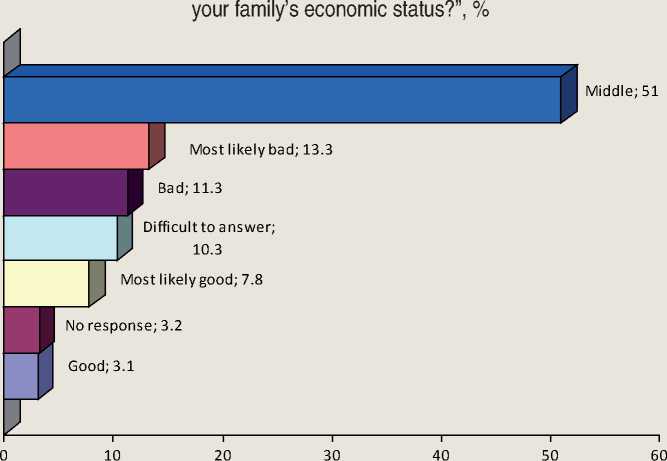
Figure 2. Distribution chart of responses to the question: “How would you estimate the economic situation in Belarus?”, %
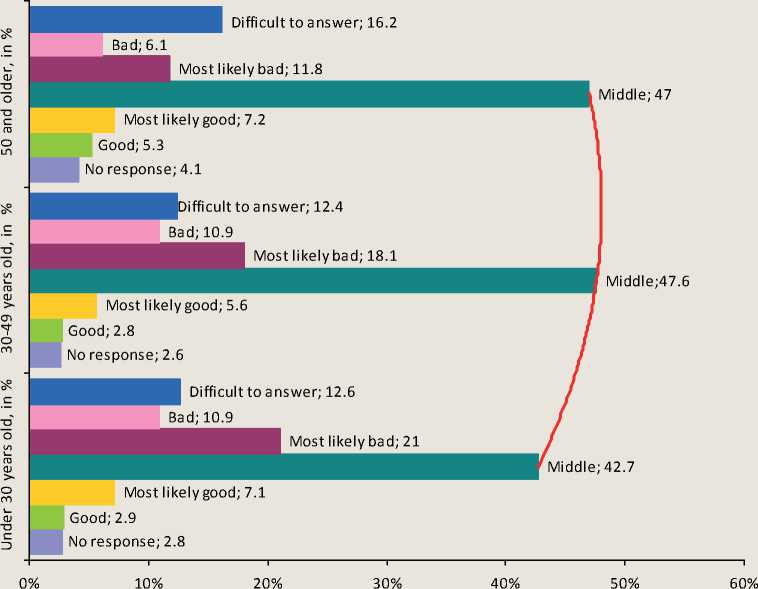
group of respondents, because only 17.9% of “older” and 29% of middle age called it bad; among this category of people there are such who could not define it accurately – 12.6% found it difficult to answer this question (fig. 2) .
Thus, performance estimates of the economic situation of the Republic of Belarus and their own family, characteristic of young people, are notable for neutral values with a shift toward negative, which is due to modern global economic crisis affecting the country. Concerning the acute problems of the contemporary Belarus, the opinion of youth can be represented as the top ten (from the most current): growth of alcoholism (62.9%), constant rise in prices (62.1%), low living standards (52.4%), unemployment (45.1%), bad ecology and environmental pollution (43.8%), low availability of housing (43.6%), corruption (41.7%), poor quality of health care (40.4%), high tariffs for communal services (40.3%), sharp stratification of the population by income (36.7%).
The least typical of the country, in the opinion of young people, is ethnic strife; the problem took the last place far behind the others. The described “top ten” of problematic background of the country is different from those which, according to young people, is characterized by personally interviewed and their families, and is as follows: high tariffs for communal services (37.5%), rise in prices (30.6%), low affordability of housing (28.9%), low living standards (23.8%), poor quality of health care (20.8%), lack of social protection of citizens (15.7%), delays in payment of salaries, pensions and scholarships (15.0%), environmental problems (13.6%), rising alcoholism (10.4%), unemployment (10.2%).
Defining their place among the social groups, the majority of the young respondents identify themselves with people of average income, including 56.7%, which is 7% higher than among the middle generation and 14% – compared to the “older” generation; 16.8% ranked themselves to “poor”, and the elderly people rank themselves to “poor” two times more (33.0%) compared with the young, and among the “middle generation” there are 10% more of such people; 4% of the respondents consider themselves as destitute, 17.2% found it difficult to determine their position among the above-mentioned categories (fig. 3).
Characteristics of emotional sphere of the youth social wellbeing
Data of the survey conducted by the Institute of Sociology of NAS of Belarus in June – July 2009 showed the following results.
Firstly, the self-sentiment, which is mainly experienced by young people in recent years, is characterized by a predominance of positive values (61.8%), among them 23.8% have good mood, 38.0% are in normal and smooth state; 13.0% experience stress and anger, fear and sadness is characteristic for less than 2% and one-fifth of the youth were not able to pinpoint their mood neither as positive nor as negative, because it (the mood) is variable (fig. 4) .
Secondly, concerning self-assessment of life satisfaction, as well as the mood it has a positive background, because there are three times
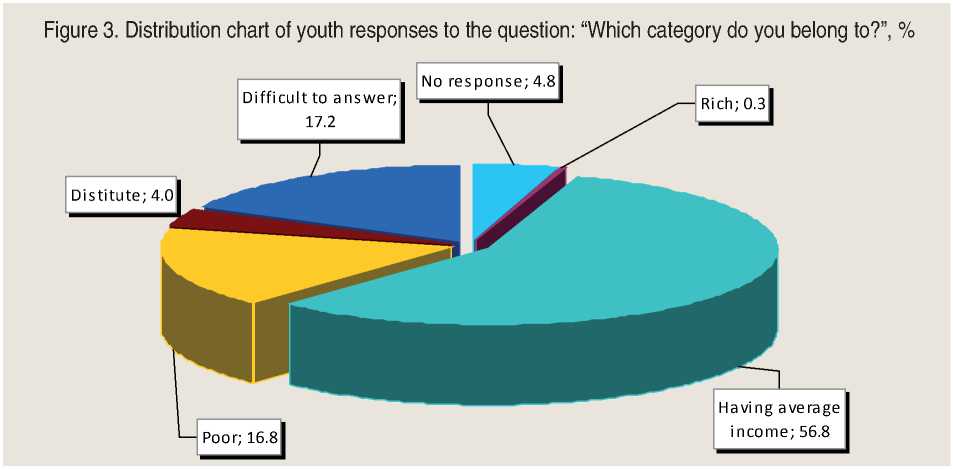
Figure 4. Distribution chart of respondents’ aged 16-30 responses on the question: “What would you say about your mood during the last days?”, %
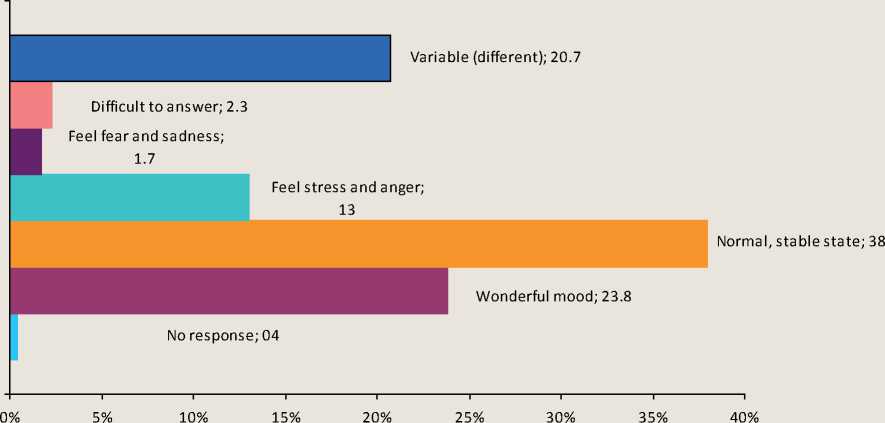
more of those who are fully and most likely satisfied than those who are at all or rather not satisfied with their lives – 67.1% and 21.2%, respectively, but there are those young people who do not know if they are satisfied with their lives or not, they are 11.6% (table) .
Responses to the question: “Please rate the extent to which you are satisfied with life in general?” (in % of young respondents)
|
Answer |
Up to 30 |
|
No response |
0.2 |
|
Fully satisfied |
17.7 |
|
Most likely satisfied |
49.4 |
|
Most likely not satisfied |
17.2 |
|
Not satisfied at all |
4.0 |
|
Do not know |
11.6 |
Characteristics of wellbeing revealed the following results: 34.7% of young people surveyed feel well, 10.2% feel that they are happy, 26.9% feel satisfactory, and 5.7% identified their feeling as poor (fig. 5) .
Thus, the emotional sphere of social wellbeing of youth in all three of its components, demonstrates the positive evaluation, compared with its cognitive element. These indicators of social wellbeing of young people are characterized as very optimistic as opposed to the middle and older generation. Determining the factors affecting life satisfaction, on the one hand, and wellbeing, on the other hand, some differences have been recorded.
Thus, the hierarchy of factors in life satisfaction is as follows: 1st place – self-assessment of own state of happiness (“eudaemonist” type – 31.5%), 2nd place – assessment of goals achieved (“goal focused” type – 21.5); 3rd place – a comparison of personal wellbeing with the wellbeing of others (“materialists” type – 18.7%), 4th place – a comparison of own lifestyle with lifestyles of others (“realists” type – 14.3%); 5th place – evaluation of family welfare and/or personal relationships (“family focused” type – 11.0%), 6th place – trust and recognition from others (“glorious” type (from the Latin. gloria – glory) – 7.2%), 7th place – evaluation of achievements in work (service, studies) and the prestige of job (“careerists” type – 9.1%).
Moreover, to middle and older generation evaluation of welfare and standard of living was a decisive factor, which is not much ahead of a factor associated with a sense of happiness. Factors-outsiders for all age groups were those related to work, study or service, namely, their prestige and achievements.
Concerning the determinants of wellbeing, the top five was allocated. For young people,
Figure 5. Distribution of respondents’ answers to the question: “How do you estimate your feeling?”, %
I do not consider my
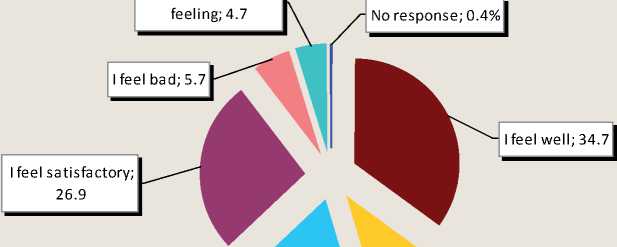

it depends mainly on relationships with close people, on the state of health, on the financial situation of the family, on personal financial situation, and the fifth place went to such a factor as family wellbeing. Last places were shared between the confidence of others and the state of personal security. Unlike the middle generation, whose financial position played a decisive role, the secondary was family wellbeing, and health took the third position. But among “older” respondents self-assessment of health prevails greatly: nearly three times as compared with the importance of other factors.
The results of sociological research suggests that, despite the current global financial and economic crisis affecting the Republic of Belarus, in young people's estimates of their own mood, wellbeing and life satisfaction positive values dominate. Studying the dynamics of young people’s wellbeing showed that it has not changed for the last time for the majority of young people surveyed, not that in other age groups. However, there are differences in the ratio (for each age group) of those who have it improved and those who have it worse. Positive changes of wellbeing are mainly characteristic of youth compared with the middle and, increasingly, the older generation, most of whom have it worsened. Young respondents associate changes of wellbeing with changes in the family (personal) life, and in the material sphere.
Sociological analysis of today’s youth behavioral strategies
The analysis of young people’s social qualities self-evaluation demonstrated a reasonable degree of individual initiative, the need for self-education, self actualization, enterprise, ability to achieve goals, ability to take risks, i.e. those that underlie the internality behavioral strategies. It should be noted that in case of changes in life situation and well-being in the direction of their deterioration young people demonstrate active behavioral strategy of a positive nature.
For example, a leading behavioral strategy in case of living standards deterioration is to look for additional sources of income (60.3%), the second place took the position associated with savings and costs reduction (50.1%), the third place took the answer “I’ll rely on care from near relations”(10.8%), the fourth – “I will defend my rights” (7.6%), the fifth – a bank loan (6%), young respondents chose the following alternatives equally and least of all: “pawn valuables” (0.7%) and “try to get reimbursement for personal insurance” (0.6%).
Almost a tenth part (9.2%) of the young people surveyed believe that mass demonstrations expect the country in the case of price increases and deteriorating living standards, 46.1% think that they cannot take place, and 42.3% found it difficult to answer this question. Moreover, 11.5% admit their participation in such protests, 22.6% did not answer, and 63.0% rather or definitely will not take part in them.
But when something affects young people’s interests protest reaction are shown in their strategies in a significant proportion. Sociological data showed that over one-tenth part (11.5%) among the young respondents admit their involvement in mass protests against rising prices and poor living conditions, a fifth of young people (18.9%) are ready to use any opportunity, including extreme ones to protect their own interests in a life deteriorating situation, 12.1% are ready to go to another country, 9.6% will apply to labor union organizations; outsiders are alternatives associated with such strategies as the hunger strike and joining the party.
The results of sociological research suggests that, despite the current global financial and economic crisis affecting the Republic of Belarus, positive values dominate in the estimates of young people’s own mood, well-being and life satisfaction. However, sociological data demonstrated that against the positive background of the emotional sphere of social wellbeing alarming trends are also manifested. It is revealed that the performance estimates of the economic situation of the Belarusian society and their own material well-being shift from neutral values to negative.
Defining their place among the social groups, the majority of the young respondents identified themselves as people with average incomes. The scope of actual problems, most affecting young people, include high tariffs on utilities, rise in prices, low availability of housing, low living standards, poor quality of health and social insecurity. These issues reflect the perception of the major “dissatisfaction” that affect the immediate sphere of individuals’ life.
Список литературы Technologies substituting hospitalization (outpatient surgery) in regional health: economic-organizing aspect
- Special attention to population Health!//Health. -1988. -№ 12. -P. 2.
- The Concept of long-term social and economic development of the Russian Federation. Department of Economic Development and Trade. -Moscow, 2008. -37 p.
- Evaluation technique of the activity effectiveness of executive authorities in the subjects of the Russian Federation. Report № 1, July 18, 2007 . -Access mode: http://www.primorsky.ru/files/5584.doc
- Method for calculating the effectiveness of medical technologies in health care. Ministry of Health Care of the Republic of Belarus. /K.A. Movchan . -Access mode: http://www.belmapo.by/downloads/onmi/Metod_159-1203.pdf
- Realization of health care reform in the regions of the Russian Federation: database . -Access mode: http://www.healthreform.ru
- Drummond, M.F. Methods for the Economic Evaluation of Health Care Programmes/M.F. Drummond, B. O’Brrien, G.L. Stoddart, G.W Torrance. -2nd. ed. (Oxford Medical Publications), Oxford University Press, 1997. -Pp. 131-135.
- Hospitals in a changing Europe/edited by Martin McKee and Judith Healy. -Open University Press, 2002. Buckingham, Philadelphia. -P. 11.

